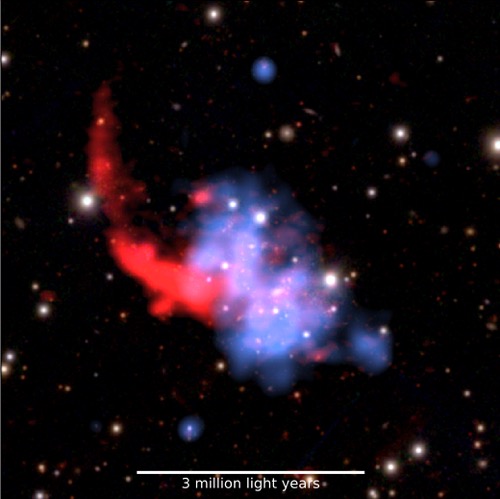An international team of researchers, including Aurora Simionescu (SRON / UL) has mapped nine gigantic collisions of galaxy clusters. The collisions took place seven billion years ago and could be observed because they accelerate particles to high speeds. It is the first time that collisions of such distant clusters have been studied. Publication in Nature Astronomy.
Galaxy clusters are the largest structures in the Universe. They can consist of thousands of galaxies, each with billions of stars. When such clusters merge, the electrons between them are accelerated to almost the speed of light. The accelerated particles emit radio waves when they come into contact with magnetic fields inside the clusters.
eight hours exposure time per cluster
Until now, telescopes were not powerful enough to receive radio waves from colliding clusters seven billion lightyears away. But thanks to the Dutch-European network of linked LOFAR antennas and an ‘exposure time’ of eight hours per cluster, the researchers were able to collect detailed data for the first time.
strong magnetic fields
The data shows, among other things, that the radio emission is brighter than previously expected. Furthermore, the magnetic fields in the distant clusters turned out to be about as strong as in previously investigated nearby clusters. According to co-author and magnetic field expert Gianfranco Brunetti (INAF-Bologna), this was unexpected: ‘We do not yet know how these magnetic fields can be so strong in a still young Universe, yet our study provides important constraints on their origin. We expect that future observations of distant clusters will provide more insight.’
According to prevailing theories, cluster radio emission originates from electrons that are accelerated by turbulent motions. Research leader Gabriella Di Gennaro, PhD candidate at Leiden University adds: ‘We therefore think that the turbulence and vortices caused by the collisions are strong enough to accelerate particles also in a young Universe.’



